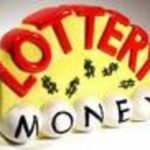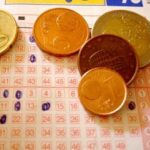Probability affects almost everything we do. Probability is the effect or outcome of an event. In real life probability can be the difference from you winning the lottery to buying a defective item at the grocery store. Pascal’s triangle, which was created by Blaise Pascal, can be used to predict probability.
Pascal’s triangle is named in the honor of Blaise Pascal. Although others have constructed the same triangle before the triangle was named after him. Blaise Pascal showed brilliant talent from the very beginning. . (Giancoli, D., C p.276) Pascal’s triangle is a tool to calculate probability. Blaise Pascal’s surname is used as a measurement of pressure. (Benson, J. p.379)
Pascal’s triangle is used in calculating probability. Pascal’s triangle in constructed by adding the numbers adjecent to the preceding rows. For example in the 2nd row the numbers are 1 2 1 and to find the 3rd row you would add 1+0=1, 1+2=3, 2+1=3, 1+0=1 and the third row is 1 3 3 1. In this way Pascal’s triangle can calculate probability. First you have to calculate the row of Pascal’s triangle. (Fendel, D. p.450)You can calculate the probability by using the row of Pascal’s triangle with the number of attempts that you are going to do the event. For example if I were going to attempt to pick a ticket for a raffle out 5 tickets then I would use the 5th row of Pascal’s triangle. The 5th row of Pascal’s triangle is 1 5 10 10 5 1. If we use the formula nCr which means that we are selecting a number of r from a total number of n. in this case we are attempting to pick a raffle ticket or in other words 1 number from a total of 5 numbers.(Fendel, D. p. 458) There is 1 way that I could pick no tickets from 5 tickets or in other words 5C0, there are 5 ways I could pick 1 ticket which is 5C1, there are 10 ways I could pick 2 tikcets from 5 tickets which is 5C2, there are 10 ways that I could pick 3 tickets from 5 tickets which is 5C3, there are 5 ways that I could pick 4 tickets from 5 tickets which is 5C4, and there is 1 way that I could pick 5 tickets out of 5 tickets which is 5C5.
The chart looks like this: 5C0=1, 5C1=5, 5C2=10, 5C3=10, 5C4=5, 5C5=1 or the 5th row of Pascal’s triangle which is 1 5 10 10 5 1. To find the percent we would use the formula (n/r)p^r(1-p)^n-r . For example if we were to find out when the percent of us rolling a 6 iion the die if we roll it 1 time then we would replace the r with 1 because 6 is one odd of the die and we would replace the n with 6 because of the 6 numbers on the die. We would replace the p with 0.17 because that is the approximate percent of rolling a 6 on a die. If we replace the variables the formula would look like this: (6/1) (0.17) ^1(0.83) ^5 which is approximately 0.40. That means that if you roll the die once the probability of rolling a 6 once if you roll the die 6 times is 40%.
The word probability is Latin for prove and test. A result for rolling a die can be thought of as a random variable. For example in rolling a die the random variable that you can get is 1, 2,3,4,5 or 6. All random variables must come an equal amount of times otherwise the probability will be off. In order to have all outcomes equivalent you would need probability. The probability means the number of outcomes or the odds of a total number of outcomes. The probability is always exact and rarely each outcome will show as the probability states unless the activity, such as rolling a die, is done many times. Even then the probability may be slightly off. Or in other words the probability won’t be evident unless all outcomes are as they should be. Probability can be determined by just calculating the 1 outcome or odd and comparing it with all of the other outcomes. Then you put that into a fraction form and then find out the decimal form of that fraction. That decimal can be put into a percent and that percent will represent the percent one outcome being made out of all outcomes. Probability is always exact, but may not always show in an activity. Book: (John B. p.39) The probability of rolling a 6 on a die is about 17%. You can calculate these odds by showing all possibilities of rolling a six. For Example if you take the outcomes of a 6 while rolling a dice 4 times you can get these possibilities if you replace another number with N.(6,6,6,6), (6,6,6,N), (6,6,N,6), (6,N,6,6), (N,6,6,6), (6,6,N,N), (6,N,N,6), (N,N,6,6), (N,6,6,N), (6,N,N,N), (N,N,N,6), (N,N,6,N), (N,N,N,N) On each roll of the dice the possibilities of rolling an N is 6/6-5/6=1/6 and 1/6 is about 17%.
Probability affects many aspects of our life. If we were able to control the way that prbability is and how we can understand it better, then we could contol the parts of our life that are affected by probability. Probability can be predicted by using a methods of calculating probability created by Blaise Pascal and named in honor of him called Pascal’s triangle. We could create so much more if we knew how to predict things beforehand.
References were obtained from http://en.wikipedia.org/wiki/Pascal’s_triangle, on October 13, 2006




